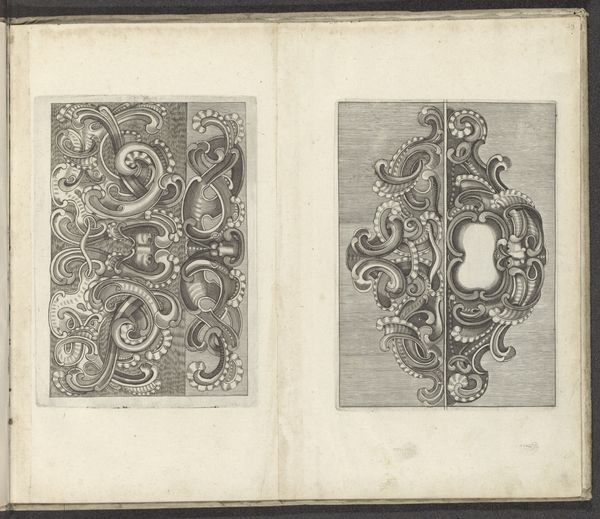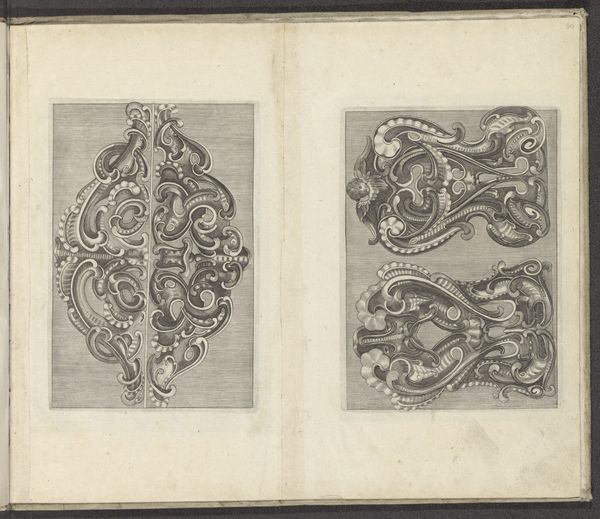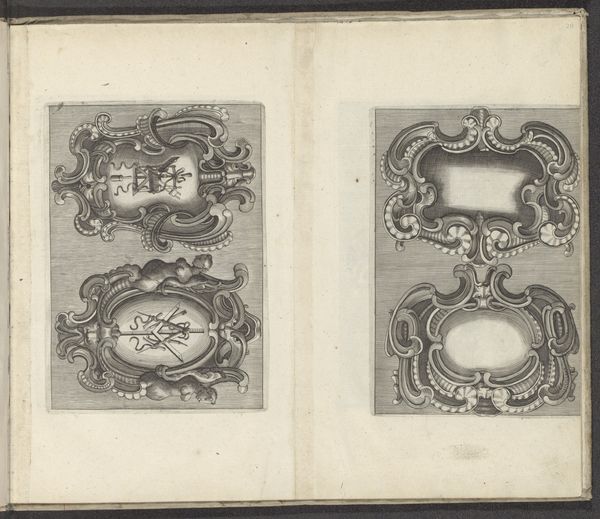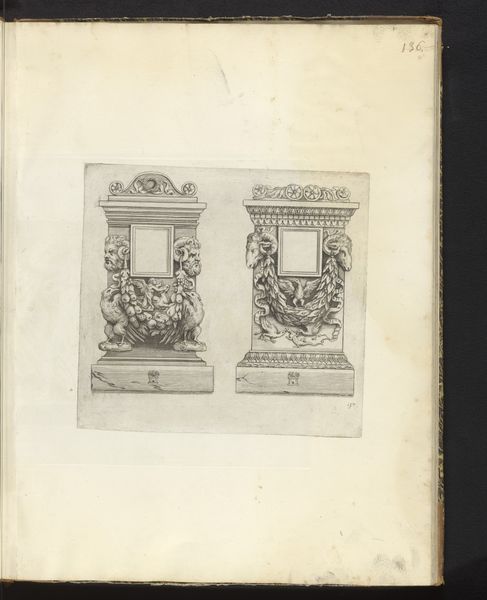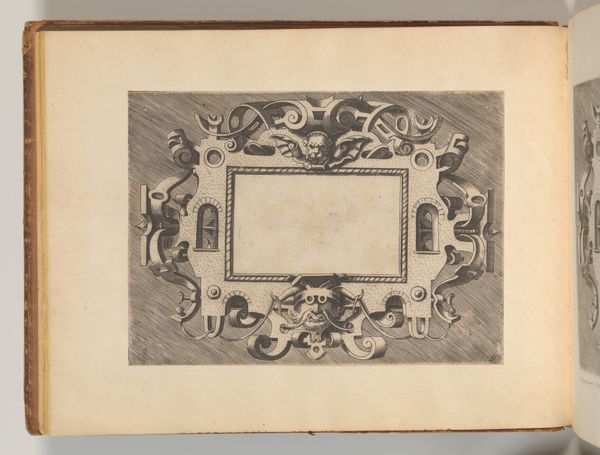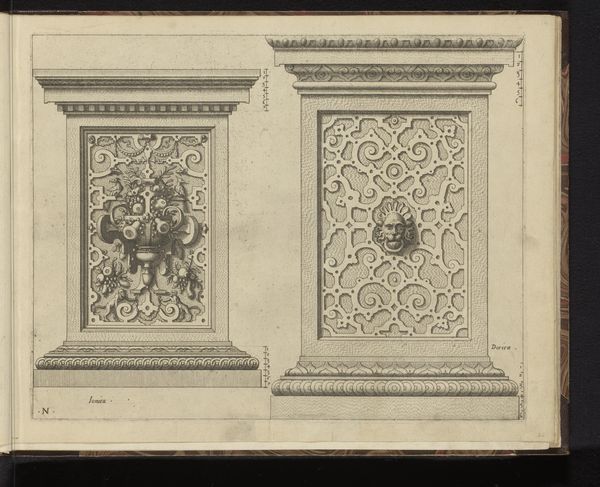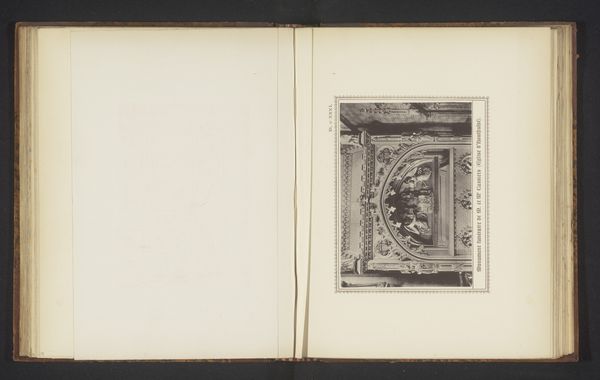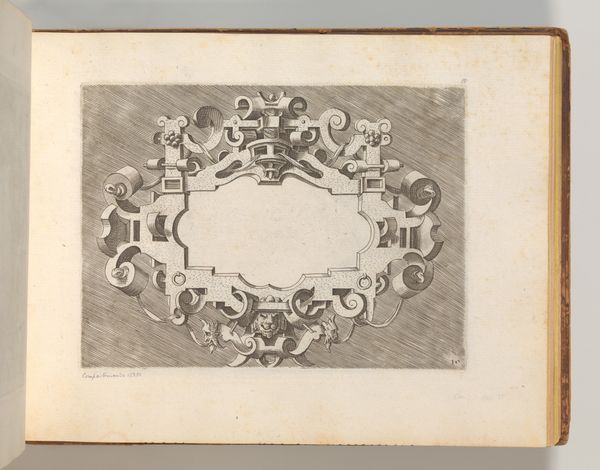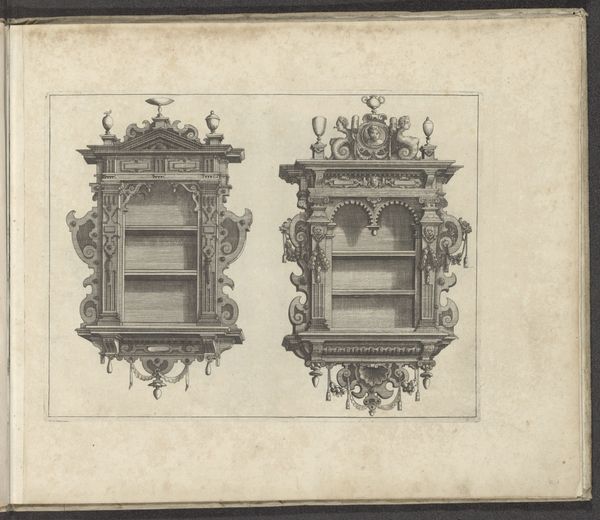
drawing, ornament, paper, engraving, architecture
#
drawing
#
aged paper
#
ornament
#
toned paper
#
baroque
#
pen sketch
#
sketch book
#
paper
#
personal sketchbook
#
geometric
#
column
#
pen-ink sketch
#
pen and pencil
#
pen work
#
sketchbook drawing
#
sketchbook art
#
engraving
#
architecture
Dimensions: height 198 mm, width 132 mm, height 199 mm, width 128 mm
Copyright: Rijks Museum: Open Domain
Editor: This is a 17th-century drawing titled "Twee zuilen en vier ornamenten in kwabstijl," by an anonymous artist. It appears to be pen and ink on toned paper, part of a sketchbook maybe. There's something kind of unsettling about the asymmetry of the ornamentation... almost grotesque. What do you make of it? Curator: Unsettling is a good word for it. These sketches embody the aesthetics of the Baroque, but they also subtly challenge classical ideals of harmony and proportion. Look at the "kwabstijl"—the "lobbering" style. It reflects a period grappling with shifting social structures, doesn’t it? Editor: Shifting how? Curator: Well, consider the social context. The 17th century was a period of immense religious and political upheaval. The rigid structures of the old world were literally being dissolved by new scientific and philosophical ideas, not to mention colonial expansion. Editor: So, the ornamentation mirrors that social dissolution? Curator: Precisely. The artist isn't just creating pretty patterns; they're responding to a world in flux, visually representing this era of transition and unease. Even the architectural elements seem to be melting into the swirling ornamentation. Notice the hint of the body almost consumed by design! Do you see elements of control? Editor: I guess I didn’t really think about the social turmoil in terms of art. How powerfully art echoes our society! Curator: And resists it too! Don't forget, artists have always held a mirror, reflecting and refracting the power dynamics around them. Editor: Thanks for your perspective, it gives a new depth to the image. Curator: Absolutely. Now, think about how these kinds of designs might also uphold systems of power. Is it also a demonstration of virtuosity?
Comments
No comments
Be the first to comment and join the conversation on the ultimate creative platform.
